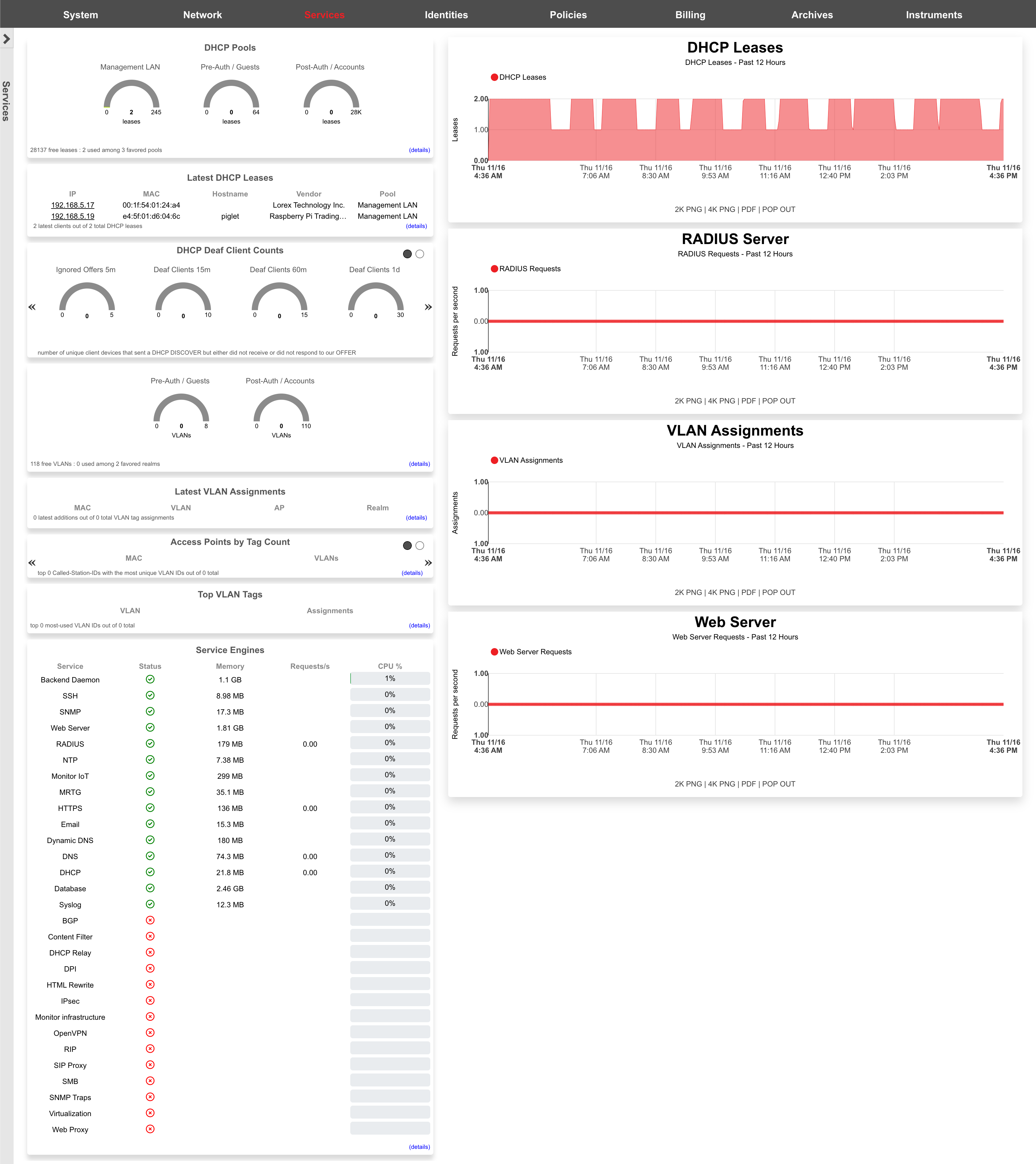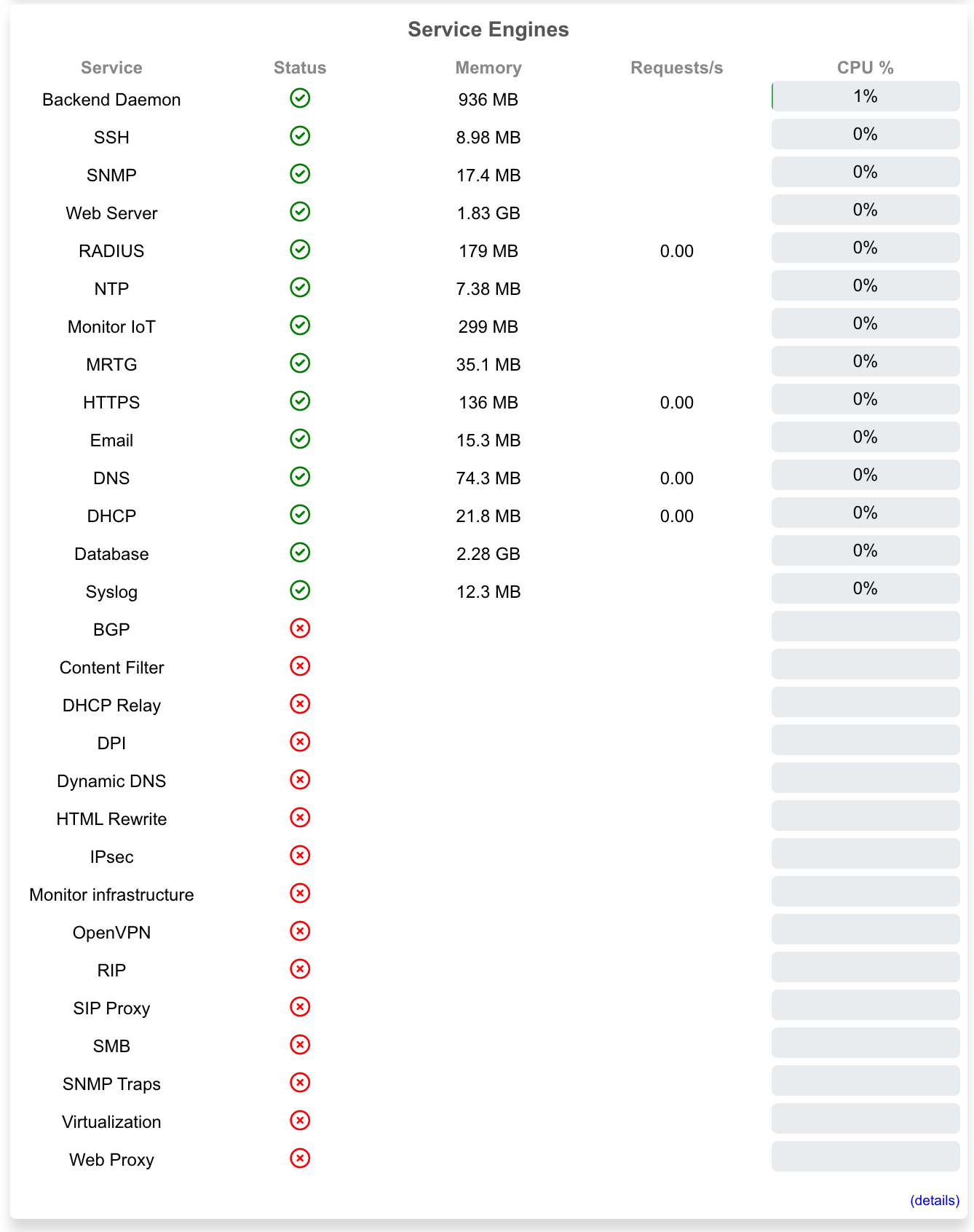Services
All IP-data networks must provide several core services in order for end-users to establish connectivity. The vast majority of IP-data networks use DHCP for provisioning end-user IP addresses. Thus a DHCP server is a requirement for almost every IP-data network. DHCP server responses include DNS server information. Most IP-data networks incorporate a local, caching DNS server, to improve network performance. Furthermore, information security is another critical aspect of the contemporary IP-data networks. One commonly deployed service to help increase the trustworthiness of the network is an IPsec VPN concatenator. Many IP-data network also incorporate network time (NTP) and SNMP services to ease administration.
Revenue generating networks must deliver several additional services in addition to which most other IP-data networks must provide. If a captive portal is used, then a web application server must be present on the RGN. If the captive portal is to incorporate advertising, an advertising proxy and rotation server is needed. Email broadcasts, transparent web proxies and many other possibilities exist. In many cases, the profitability of the RGN is directly related to the availability and provisioning of the network core services.
The rXg incorporates all of the core services needed to operate a revenue generating network. The services menu enables the operator to access the views needed to configure core services integrated into the rXg.
Services Dashboard
The services dashboard presents an overview of the current status and configured settings for the various core services executing on the rXg.

The left column presents dialogs depicting summaries of the latest instrumentation gathered from the DHCP server.

The top dialog in the left column displays statistical information about the DHCP pools offered by the DHCP server. Next to the name of the pool, the current number of free and used leases is displayed. The right column displays the maximum number of leases that may be in use simultaneously. This dialog is extremely useful in determining if the DHCP pool is configured in a way that makes it capable of serving the entire end-user population.
The bottom dialog in the left column displays the four latest DHCP leases that were issued by the DHCP server. The IP address issued is listed along with the MAC address and DHCP client ID (if the client transmitted one in the request). This dialog is very useful for quickly tracking down problematic end-users who have recently joined the network. First call end-user support personnel will find the information presented in this dialog very useful in identifying and isolating end-users with connectivity problems.
The right column presents graphs describing the recent load of various core rXg services.

The first graph in the right column presents the recent average number of DHCP leases.

The second graph in the right column presents the recent average number of VLAN tag assignments.

The last graph in the right column presents the recent average number of web server hits. The web server hit count is determined by the number of end-users hitting the captive portal web application, typically as a result of forced web browser redirection. Keep in mind that the default interstitial advertising methodology uses the captive portal to deliver the ad content as well.

The dialog presented at the bottom of the left column displays a dashboard of status lights for the various services offered by the rXg. A red light means the service is currently offline or disabled. A green light means that the service is currently running. This dialog is the quickest way to obtaining a first order understanding of why a particular rXg subsystem is misbehaving when troubleshooting new service deployment scenarios. Clicking on the light will take you to a relevant view for configuring the service. This dialog also displays the current instantaneous rate of web server, web proxy and HTML injection hits. This is very useful for comparing the current rate with the rates presented in the graphs to see where the current load of the rXg fits in the overall picture of recent load.